In the heart of Jerusalem’s City of David, an extraordinary archaeological discovery has unearthed a rare and remarkably well-preserved ritual structure from the First Temple period. This site, complete with altars, a standing stone, and facilities for oil and wine production, offers a glimpse into the ancient practices of Judah’s elite. With its rich historical context and unique findings, this discovery unveils a pivotal chapter in the religious life of ancient Jerusalem.
The Discovery and Excavation Process
The ritual structure was uncovered in the eastern slope of the City of David, an area long known for its rich archaeological finds. The excavation, initiated by the IAA, revealed a large, rock-hewn structure measuring approximately 220 square meters and consisting of eight rooms. Unlike many other ancient sites, this particular structure was sealed by fill from the eighth century BCE, which has preserved it remarkably well. The systematic excavation of the site began in 2010, although it had been partially uncovered as early as 1909 by British explorer Montague Parker in his quest to find the Ark of the Covenant.
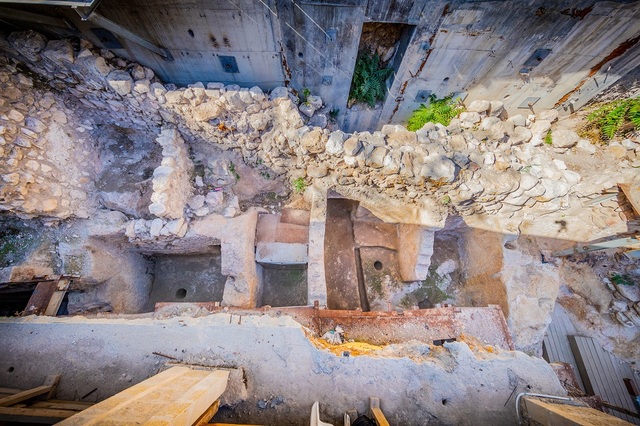
Eli Shukron, who led the excavation, noted that the site was exceptionally well-preserved, especially considering its long history. One of the most remarkable aspects of this discovery was that the standing stone (masseba) was found upright in its original place, with other features of the structure—such as the altar and rooms—also in excellent condition. This preservation allows researchers to make detailed analyses and gain a deeper understanding of the site’s original use.

Video
Check out the video for a study on a structure in the City of David, revealing its use for ritual practices during the First Temple period. This discovery offers fascinating insights into ancient religious practices!
Description of the Ritual Structure
The ritual structure itself is a complex and unique find from the First Temple period, offering insights into the religious practices of the time. Measuring about 220 square meters, the structure includes eight rock-hewn rooms, each with its own distinct function. The presence of such a large and well-designed space points to the importance of this site for religious activities in ancient Judah. The variety of features and artifacts found within the structure suggests it was used for a range of rituals, from daily offerings to more elaborate ceremonies.
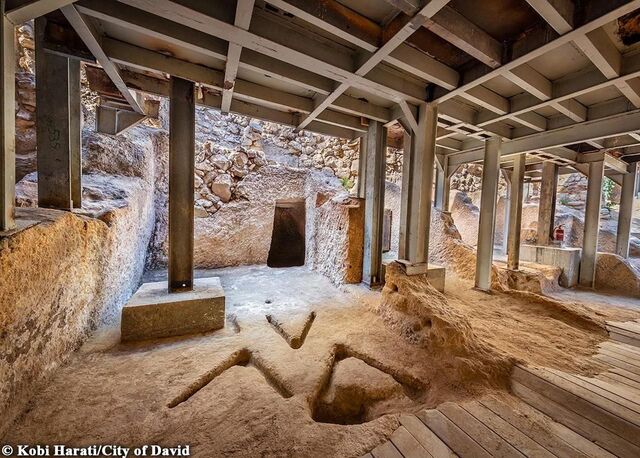
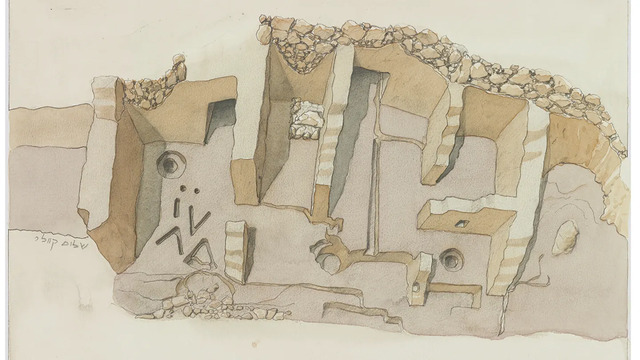
Among the most striking features of the structure are its altar, standing stone, and facilities for the production of oil and wine. The structure’s design and the materials used indicate that it was an important place for ritual activities, likely serving as a focal point for the community’s religious life. The inclusion of an oil press and a winepress suggests that these substances played a significant role in the rituals conducted here, as both oil and wine were used in various offerings and ceremonies in ancient religious practices.

Significant Findings: Altar, Masseba, Oil Press, and Winepress
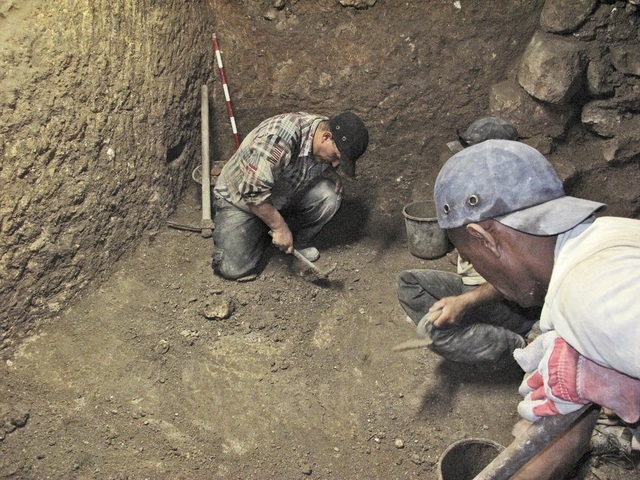
The altar, found within the structure, is one of the most significant discoveries, as it provides direct evidence of ritual activities conducted on the site. The altar is associated with a carved installation that features a drainage channel, which researchers interpret as a means to channel liquids, possibly as part of the sacrificial or purification rituals. The oil press and winepress further emphasize the site’s ritual importance, as both oil and wine were integral to religious offerings in ancient Israel.
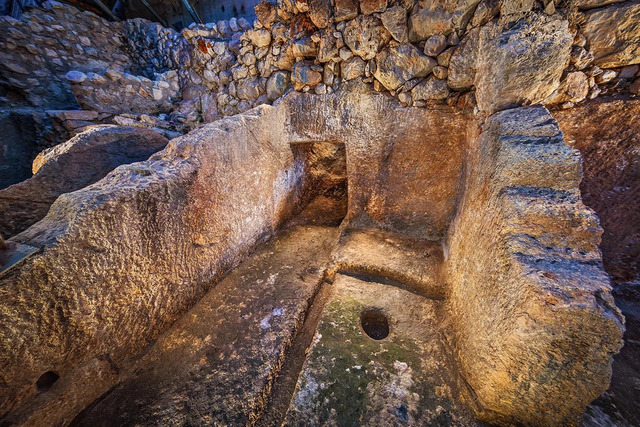
In addition to these functional features, the standing stone (masseba) found in the structure is also a crucial element in understanding the site’s religious significance. The masseba was a common feature in ancient Israelite worship, often serving as a symbol of divine presence and marking sacred spaces. Its upright position and careful preservation in this ritual space suggest that it played a central role in the ceremonies conducted here.

Mysterious Carvings and Possible Ritual Uses

One of the more intriguing discoveries at the site was the presence of V-shaped carvings in the floor of one of the rooms. These carvings are thought to have served as a stand for a tripod, which would have been used in rituals. The exact function of these carvings remains a subject of debate, but their presence adds an element of mystery to the structure. The tripod may have been used in ceremonies involving offerings, or it could have served a more symbolic role in the religious practices of the time.
The presence of these carvings, along with other ritual features like the altar and the standing stone, paints a picture of a site that was dedicated to complex religious activities. These activities may have included animal sacrifices, offerings of oil and wine, and possibly even divination practices, all central to the religious life of ancient Judah.
Artifacts and Their Insight into Daily and Ritual Life
In addition to the structural features, archaeologists also discovered a cache of artifacts dating to the eighth century BCE in a small cave at the edge of the site. The artifacts include cooking pots, jars with fragments of ancient Hebrew inscriptions, loom weights, scarabs, stamped seals, and grinding stones. These items provide valuable insight into the daily lives of those who used the ritual structure, as well as their religious practices.
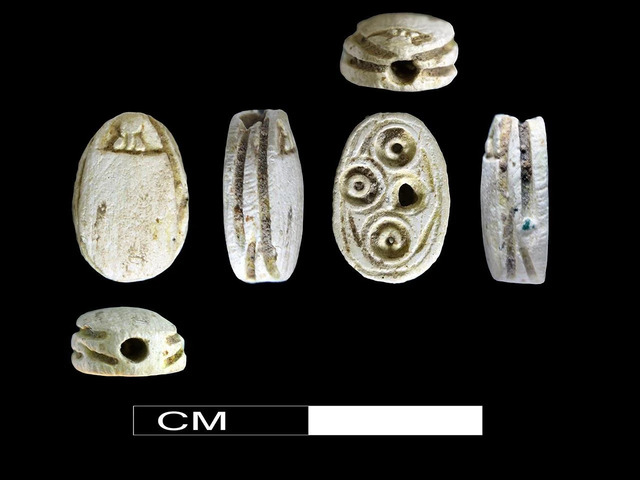
The Hebrew inscriptions found on some of the jars may offer a glimpse into the religious and cultural identity of the people who inhabited the area. These inscriptions could be linked to religious texts or rituals, further enhancing our understanding of the relationship between everyday life and religious practice in ancient Judah.
Historical Context: The Abandonment of the Structure
The abandonment of the ritual structure around the eighth century BCE coincides with the reign of King Hezekiah, a ruler known for his religious reforms. According to the biblical account in 2 Kings, King Hezekiah sought to centralize worship in Jerusalem by dismantling smaller ritual sites scattered throughout Judah. This reform, which included the destruction of altars and standing stones, likely led to the abandonment of the ritual structure uncovered in the City of David.
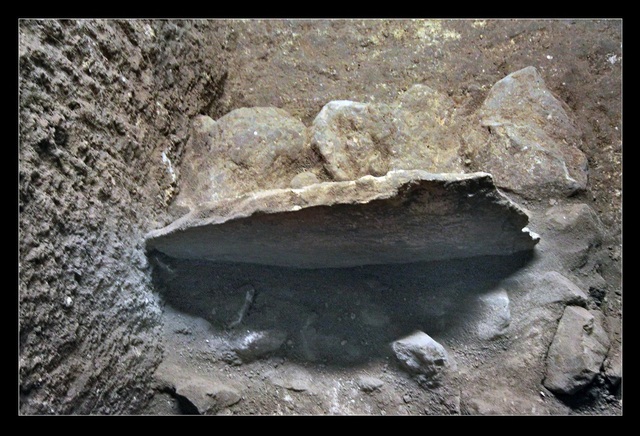
The structure’s cessation of use during Hezekiah’s reign provides a fascinating historical context for its abandonment. As Hezekiah worked to consolidate religious practices and eliminate competing cultic sites, the once vibrant center of worship in the City of David ceased to function. This connection between the discovery and Hezekiah’s reforms offers a deeper understanding of the religious shifts taking place during this time.
The Legacy of the Site: From Discovery to Public Access
While much has already been uncovered, archaeologists believe the site still holds potential for new discoveries. The site’s ongoing excavation promises to provide more insights into the religious life of ancient Jerusalem. Once fully excavated and studied, the ritual structure will be open to the public, offering visitors a rare opportunity to experience a significant piece of ancient history.
The ongoing work at the City of David underscores the importance of archaeological efforts in understanding the ancient world. As more discoveries are made, they continue to enrich our understanding of the ancient civilizations that shaped modern history.

Video
Watch the video to explore the rare collection of ivories from the First Temple period found in the City of David. This discovery provides a unique glimpse into ancient history and craftsmanship!
Conclusion
The discovery of this rare ritual structure from the First Temple period in Jerusalem’s City of David is a remarkable find that sheds new light on the religious practices of ancient Judah. From its well-preserved altar and standing stone to the intricate oil and wine production facilities, the site offers a detailed look at the rituals that shaped the daily lives of those who lived in this sacred space.
As the excavation continues, this site promises to provide even more insights into the cultural and religious life of ancient Jerusalem, offering a deeper understanding of the First Temple period and the forces that shaped its legacy. The site not only enhances our knowledge of ancient Israelite rituals but also provides a window into the ongoing journey of uncovering the past.



